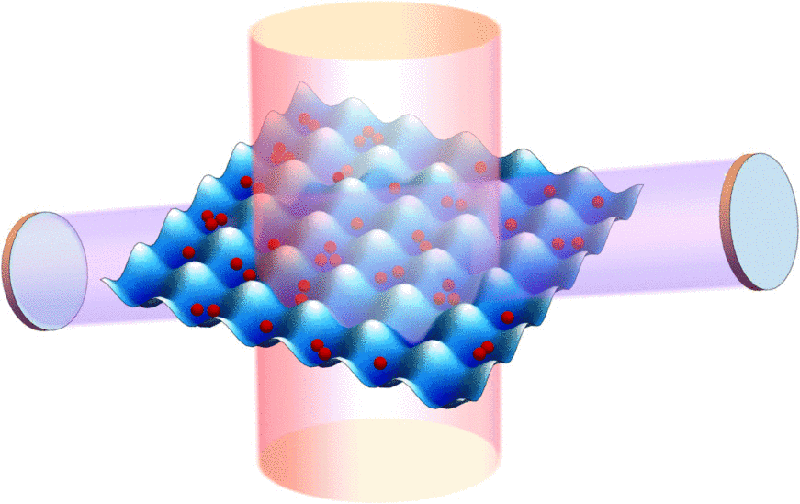

Physicists have since developed the remarkable ability to use interfering laser beams to create 1d, 2d, and 3d periodic lattices of trapped ions or atoms (shown in the above figure) that could be bosons or fermions or a mixture, and so create artificial materials where microscopic details like the lattice spacing or interactions between the trapped particles could be varied continuously, which greatly increased the ability of experimentalists to explore new kinds of phenomena and to compare experiments with theory. These experiments are an example of 21st century experimental statistical physics, in which remarkable control of microscopic details can be achieved for novel macroscopic substances.
An example of a major scientific advance using this method was the
first successful trapping in a three-dimensional cubic lattice of
fermions (potassium 40K atoms) in 2008, that allowed the
experimental group to study the phase transition of an insulator to a
metal by adjusting the lattice spacing directly. See the paper
R. Jordens et al, "A Mott insulator of fermionic atoms in an
optical lattice", Nature 455:207 (2008).